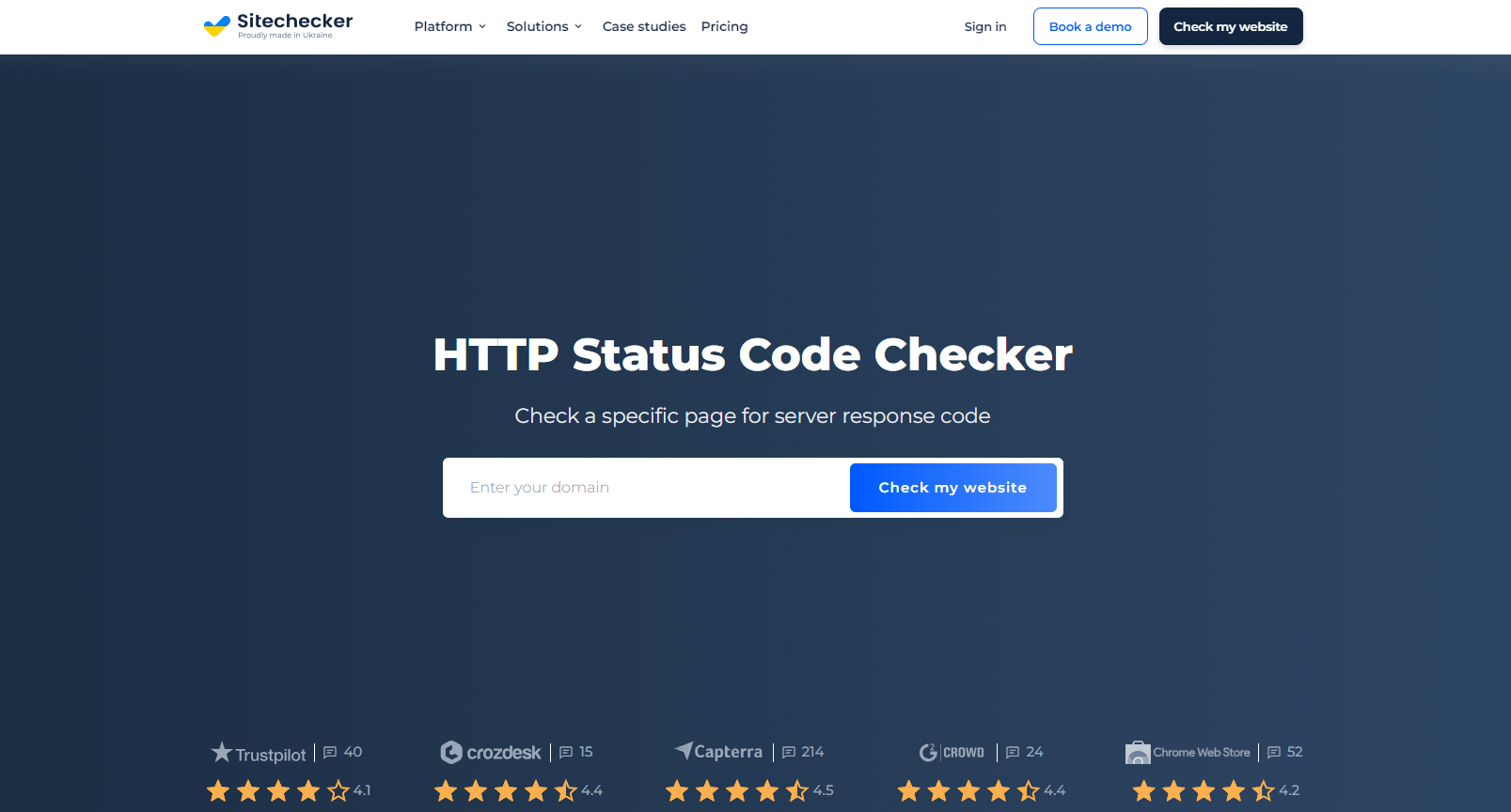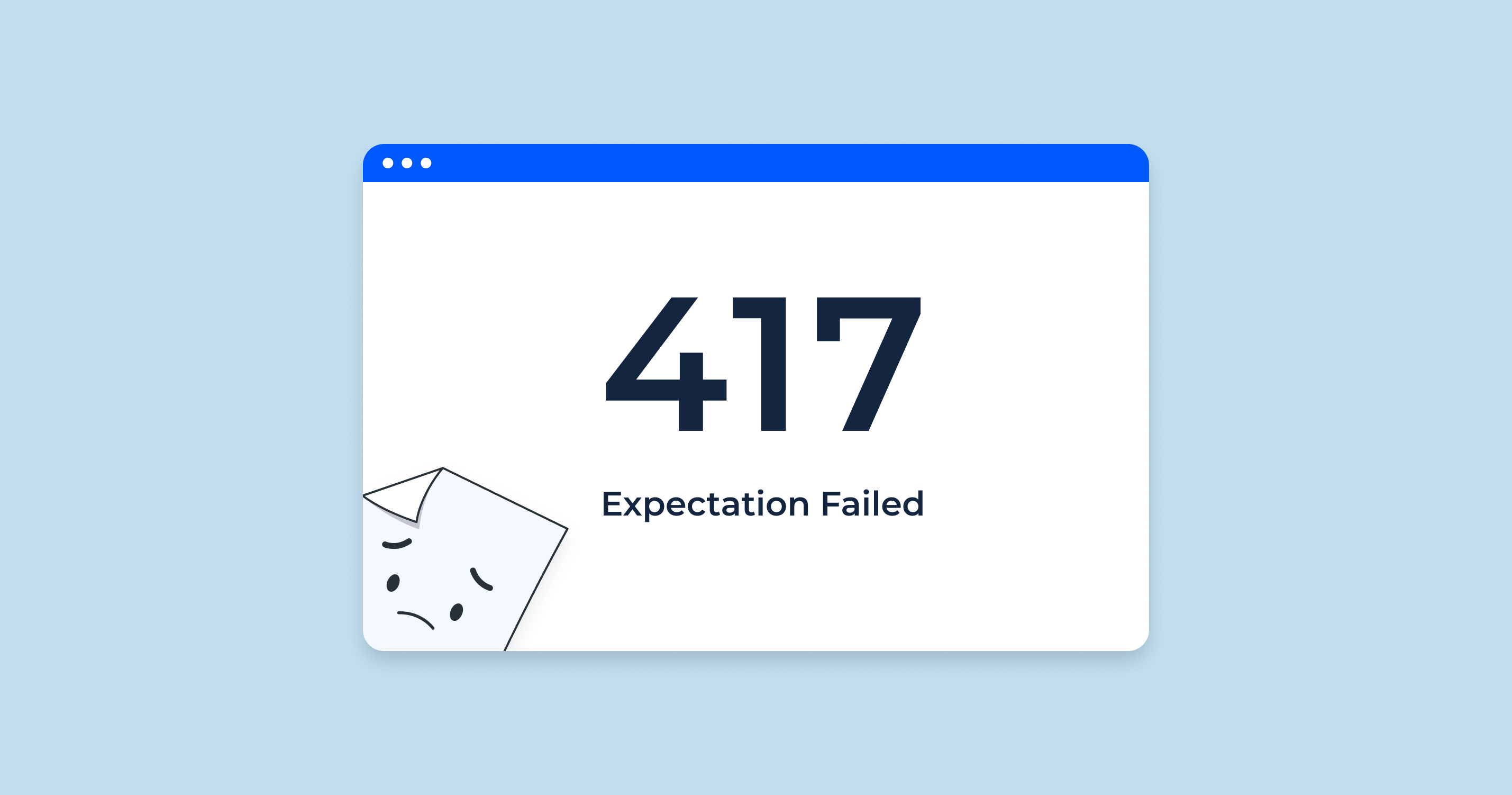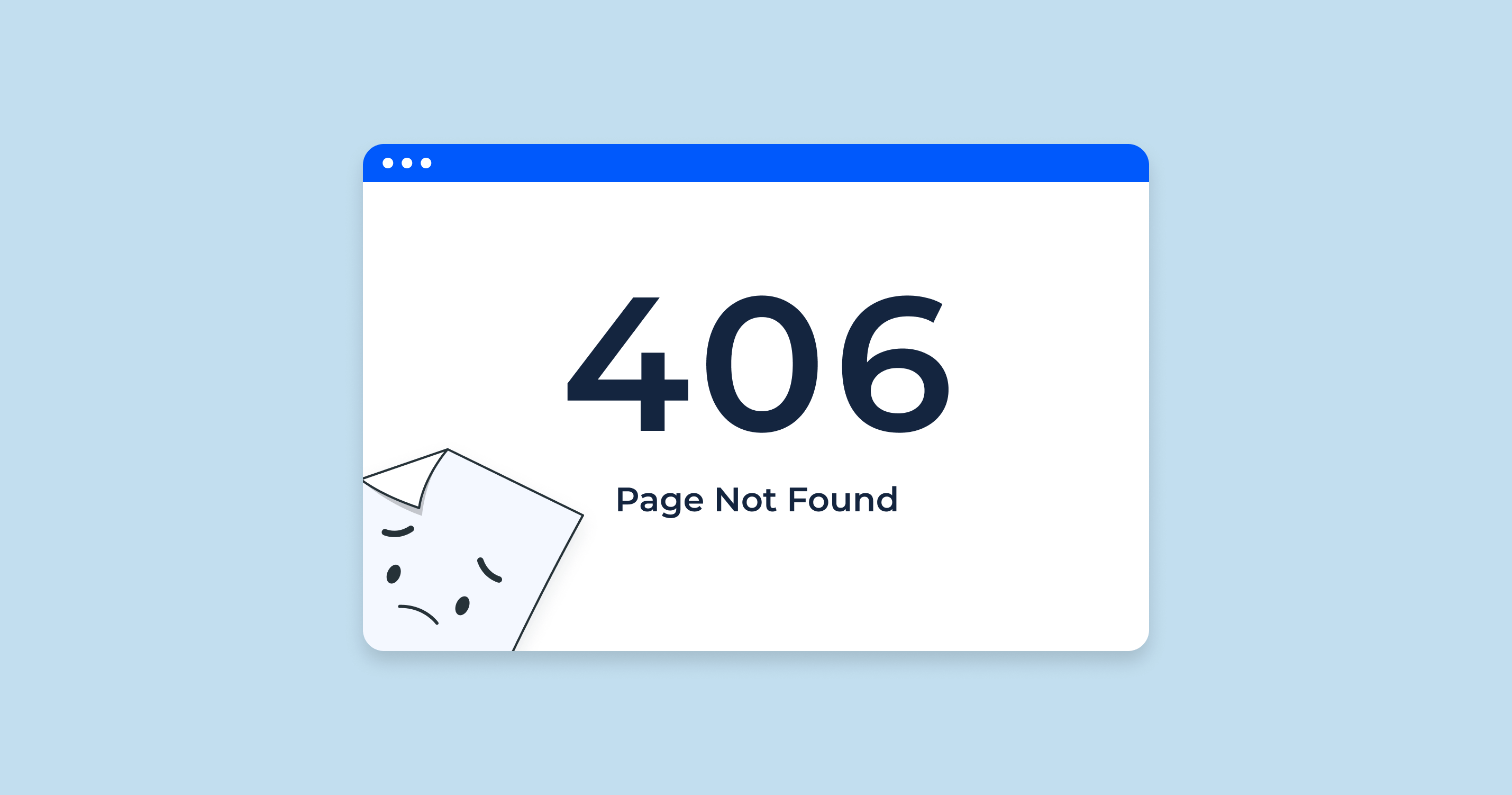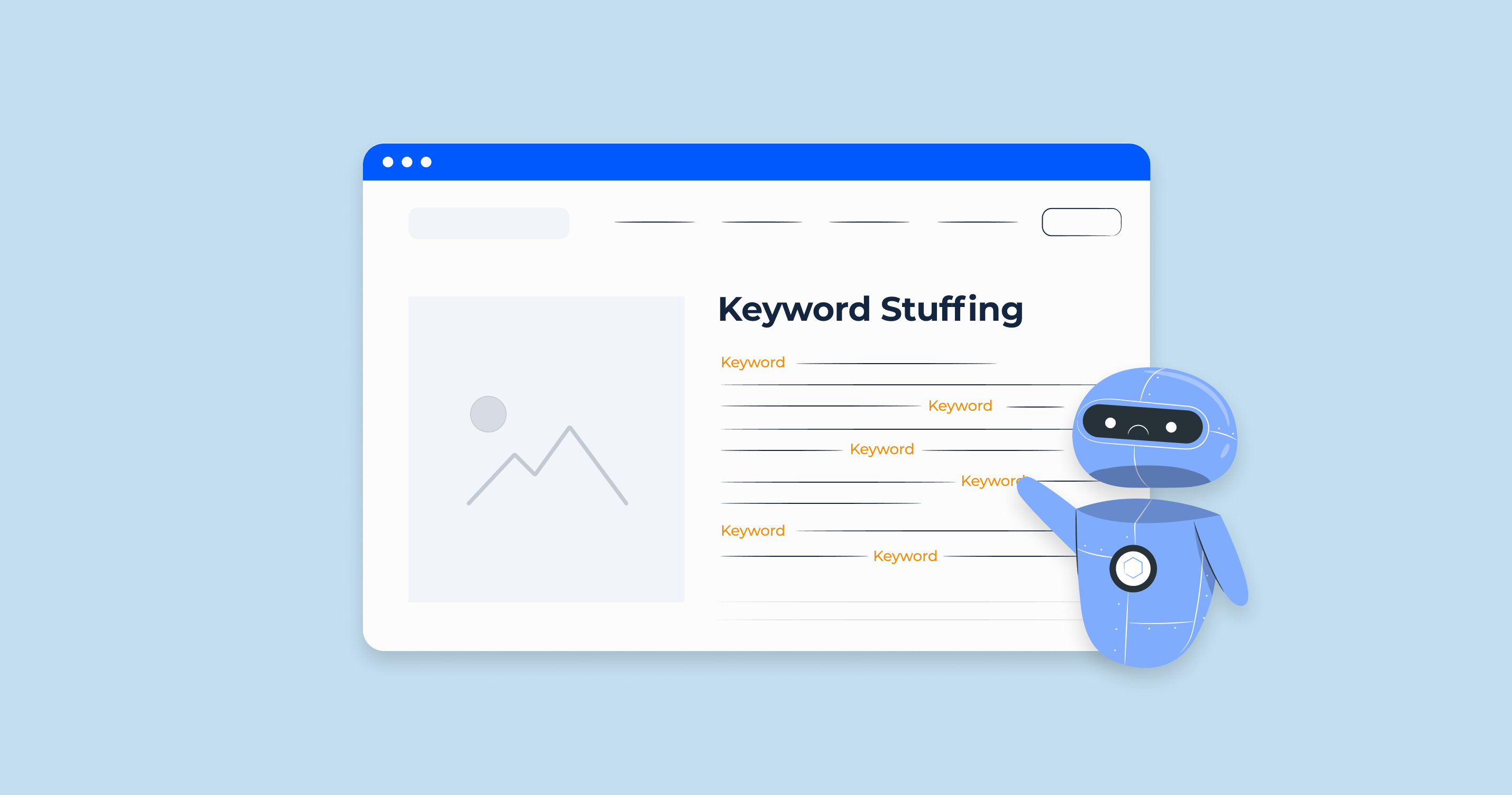The HTTP 417 Status Code, titled “Expectation Failed,” is part of the HTTP/1.1 standard (RFC 2616). This status code indicates that the expectation given in the Expect request-header field of the HTTP request could not be met by the server.
The Expect request-header field is used to indicate that particular server behaviors are required by the client. It is used to signal certain anticipated server interactions before the request body is sent. The Expect field must be included in the request when data is sent to the resource in the body of the request, specifically when it is not certain that the server will be able to process the body content.
If the requested requirement can’t be met, then the server will respond with the 417 status code. It’s essentially a way for the server to say, “I know you expected me to do something specific, but I’m unable to fulfill that expectation.”
A common use of the Expect header is the “100-continue” expectation, which allows a client to check if the server will accept its request based on the header fields, before the client sends the actual request body. This can save bandwidth if the server is likely to reject the request due to factors like being overloaded or the request being too large.
If the server cannot meet the expectation defined in the Expect header, it will return the 417 status code. This could occur if a server doesn’t understand or support the expectation given.
This status code is not frequently seen, as not many client-server interactions use the Expect header in a way that would lead to this error being produced. However, when it does appear, it might cause issues for website functionality, user experience, and potentially SEO if not addressed.
Explanation on How the 417 Status Code Could Affect SEO
While HTTP status codes, including the 417 status code, may not have a direct impact on SEO, they can indirectly influence SEO performance through their effect on user experience and the ability of search engines to crawl and index a website properly.
| User Experience (UX) | Status codes like 417, indicating server errors, can result in poor user experience. When a user encounters an error like this, it can lead to frustration and might cause the user to leave the site. High bounce rates and low dwell time can signal to search engines that the website may not provide a positive user experience, which could negatively impact search rankings. |
| Website Accessibility | If a search engine’s crawlers encounter a 417 status code while trying to access specific parts of a website, it could prevent them from accessing, crawling, and indexing the content of the page. This would mean that the page wouldn’t appear in search engine results, thereby reducing the site’s overall visibility. |
| Indexing Issues | If search engine spiders frequently encounter 417 errors while trying to crawl a site, it could impact the crawl budget, which is the number of pages search engines will crawl on your website within a specific timeframe. When your crawl budget is wasted on attempting to access pages that return errors, fewer of your site’s functional pages will be crawled and indexed. |
| Site Reputation | Frequent server errors can give the impression that the website is not well-maintained, which might indirectly affect how algorithms perceive the site. Search engines strive to deliver the best user experience possible by promoting reliable, high-quality websites in search results. |
While the 417 status code is not common, and it’s even less common for it to cause issues with search engine crawling, understanding what it means and how to resolve it will help maintain the overall health and accessibility of a website. The smoother your website runs, the better it is for both users and search engines.
417 Status Code Common Issues and How to Fix Them
A few examples related to the 417 status code. Remember, this status code is not frequently encountered, but here’s how you could address it if you encounter it:
Misconfigured Expect Header
The 417 status code often occurs when the Expect header is misconfigured in the HTTP request. This could be due to the client expecting a “100-continue” status before sending a request body, and the server is not set up to handle this or does not support it.
Server Misconfiguration
A server may be misconfigured to prevent it from satisfying the client’s Expect request-header field.
Outdated Server Software
Older server software may not understand or support the expectation in the Expect header, especially if the software predates the HTTP/1.1 standard.
Client-Server Compatibility Issues
Sometimes, the client and server may not be compatible in terms of the expectations set and the ability of the server to fulfill them.
Just as with broken links, a proactive approach is best for addressing 417 errors. Regular auditing using tools like Google Search Console and other SEO software can help identify these errors before they negatively impact the user experience or SEO.
HTTP Status Codes Checker for Detecting and Diagnosing 417 HTTP Status Codes

HTTP Status Codes Checker is a specific tool or feature, often found within broader SEO platforms like Sitechecker.pro, that allows you to check the HTTP status code that a server returns for a specific page. It’s a fundamental tool for website owners and SEO specialists to understand how their website interacts with users and search engines.
When you enter a URL into an HTTP Status Codes Checker, it sends a request to that URL, similar to how a browser or a search engine would. The server then returns a status code, which the Checker displays. This status code provides essential information about the page’s accessibility and potential issues that could impact the user experience or SEO.
For instance, if the Checker returns a 200 status code, it indicates that everything is okay and the server has returned the requested content. If it returns a 404, it means the requested page was not found.
A 417 status code would indicate “Expectation Failed”, signaling that the server couldn’t meet the requirements of the Expect request-header field.
Using an HTTP Status Codes Checker is an excellent way to proactively identify potential issues on your site that could affect its performance, usability, and search engine ranking. Regularly monitoring your site’s status codes can help you fix problems before they escalate and have a significant impact on your SEO efforts.
Conclusion
The HTTP 417 status code, or “Expectation Failed,” is used when the server can’t meet the expectation in an HTTP request’s Expect header. This code is not common, but when it does appear, it can affect website functionality, user experience, and indirectly impact SEO through high bounce rates and hindered site indexing.
Common issues leading to a 417 status include misconfigured Expect headers, server misconfiguration, outdated server software, or client-server compatibility issues. Solutions typically involve adjusting header or server configurations, updating server software, or ensuring compatibility.
Tools like Google Search Console, SEO software, and HTTP Status Codes Checker help identify and fix such issues early to prevent negative impacts on user experience or SEO.









